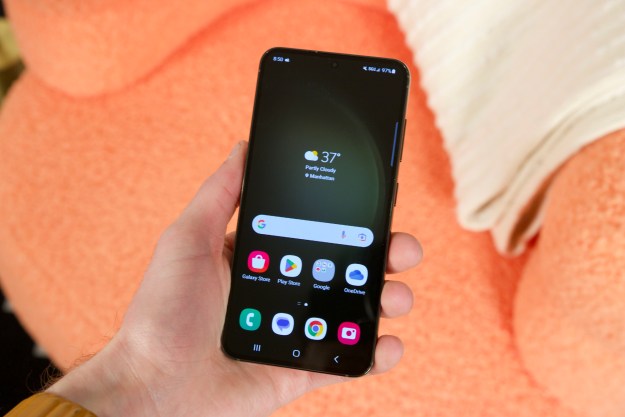A few days ago, a Reddit post sparked fresh debate asking if the Galaxy S23 Ultra was faking its moon photos. Ever since Samsung started offering a periscope-style telephoto camera on its flagships that delivers an unprecedented 10x optical and 100x digital zoom, moon photography has been marketed as one of the phone’s hottest tricks.
There’s some valid history behind the skepticism, though. In 2019, Huawei faced accusations that the P30 Pro’s Moon Mode was faking the images using an overlay system, even though the company denied it. The Galaxy S23 Ultra finds itself in a similar storm, but the company has now explained how you are getting those crisp moon shots with its flagship.
What Samsung has to say about all this

Digital Trends reached out to Samsung with a set of questions asking about the technical shenanigans happening behind the scenes. Here’s what the company had to say in an emailed response:
“When a user takes a photo of the moon, the AI-based scene optimization technology recognizes the moon as the main object and takes multiple shots for multi-frame composition, after which AI enhances the details of the image quality and colors. It does not apply any image overlaying to the photo.”
In a nutshell, the Galaxy S23 Ultra is doing what almost every smartphone camera does by default — i.e., apply a layer of edits to enhance the final result. In Samsung’s case, that enhancement happens courtesy of the Scene Optimizer feature, which you can choose to disable at will.
“Users can deactivate the AI-based Scene Optimizer, which will disable automatic detail enhancements to the photo taken by the user,” Samsung tells Digital Trends. If you choose to disable Scene Optimizer on your Galaxy S23 Ultra, the moon pictures clicked at 100x digital zoom won’t look as sharp.
So, is Galaxy S23 really faking it?

No, it isn’t. In fact, referring to those magnified moon pictures as fake is like calling your own selfies unreal if you have applied some filters like skin smoothening, exposure adjustment, and color enhancement to make them Instagram-ready. As mentioned above, the Galaxy S23 Ultra is not engage in any kind of approximation overlay. Instead, it’s just refining the final result without any linear distortions done to the subject, which in this case is the moon.
Scene Optimizer is an AI-assisted tool that automatically detects what’s in the camera’s view and then makes some adjustments to attributes like saturation, exposure, and white balance to improve the final result. That’s why when you click a photo (especially night mode and full-res 200-megapixel shots), and immediately open its gallery preview, the photo takes some time to load as Scene Optimizer is busy applying its own set of enhancements.
In the moon’s case, the system sharpens the edges and refines the surface textures that would otherwise appear blurry. Postprocessing of photos is a recurring theme across smartphone cameras, but at the end of the day, it’s in your control to get the original look or one that is slightly tweaked to make it more presentable. It’s always welcome to see a company disclosing the process and offering a recourse.
Editors' Recommendations
- Your Galaxy S22 is about to get an important security update
- Here’s a closer look at the Galaxy Z Fold 6’s new and improved cover display
- The Samsung Galaxy Watch 7 Ultra leaked, and it looks ridiculous
- Samsung Galaxy Watch 7 Ultra: news, rumored price, release date, and more
- 5 phones you should buy instead of the Samsung Galaxy S24 Plus


